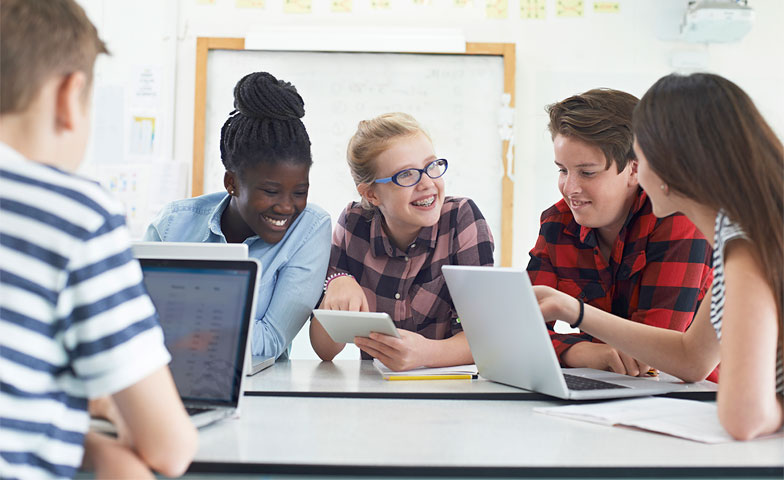Technology to enhance learning, hone teaching skills, and showcase student learning
My school district recently went 1:1, meaning each student receives their own district-issued Chromebook for use throughout the school year. As an Automation and Robotics teacher, I was interested to see how this change would affect my classroom and students. Technology had already been a big part of my curriculum, which included teaching students computer programming with several different programs, most notably RobotC and LEGO Mindstorms NXT/ EDR.
Unfortunately, RobotC and LEGO Mindstorms NXT/ EDR can’t be downloaded onto Chromebooks. Because of this, I had to find different ways to incorporate this tool into my classroom and instruction. After two years in a 1:1 school district, I have incorporated four different strategies to leverage the power of the Chromebook on student learning.
Flipping the Classroom with Blended Learning
Students access different digital resources, including videos or interactive games, before they come to class. These resources introduce them to the next topic we will cover in class. Students also create tips and tricks-focused resources such as videos and slideshows for future students. Students access these resources on our class Google Classroom.
Personalizing Learning by Allowing Students to Work at their Own Speed
Utilizing Google Classroom, I post all the class challenges in order of completion. Students access these and then work at their own speed to complete. After demonstrating knowledge on their current assignment, I direct students to read about the next real-life challenge on Google Classroom. I check in with them after about five minutes to answer questions and provide support where needed. A hidden benefit of this is that I rarely print out or make class copies of the assignments; everything can be accessed digitally via Google Classroom.
Reflecting on their Learning via Digital Reflections and Check-Ins
Using the Google Education Suite products, especially Google Forms, I am able to consistently have students reflect on their learning. Students complete three different check-ins or reflections during the course of a class assignment (class assignments generally take one week to complete): once at the beginning of the challenge (after day 1), once in the middle, and then again when completed. These reflections are not all the same but are aimed at having students reflect on their learning along with assessing the group work dynamics of the assignment. Not only does this information help them, but it helps me better tailor my instruction and support to each individual student, the groups within a class, and the class as a whole.
Creating Digital Products of Student Learning
After each challenge, I have students create a video with their Chromebooks of their finished physical product. In the video, students explain the challenge, showcase their creation, and explain why they made it the way they did. At the end of the semester students create a slideshow combining these different videos together. This student-produced creation not only relives their learning over the course of the semester, but students can show this slideshow to various community stakeholders including principals, parents, family members, classmates, and neighbors. This has been a great way to showcase to the community the awesome things students are doing.
This technology has become a great tool to help students’ learning, it has helped me be a better teacher, and it showcases student learning to community stakeholders.
